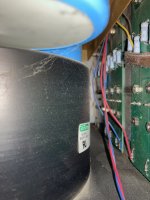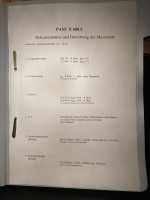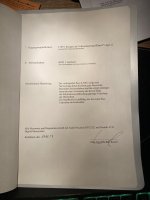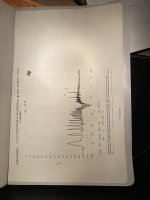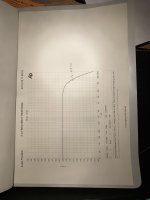Nice. Thanks for your well meant advise.1.chill
2. learn tech. side of things
3. work on your social skills
or :
1. just chill ; crank the amps, shut off anything connected to WWW
it is well meant, whatever your impression isNice. Thanks for your well meant advise.
Thanks! This is what I find helpful. A snippet of a document saying >16A and 6100-3-12 applies, then seeing the amp specs of 36A rated current made this neophyte think that the latter ...3-12 would apply vs. the former ...3-2.Above 16A in EU is a whole different think. 16A by itself is 3680W max (230*16)
I am aware of the IEC 61000-3-12, although if I am not mistake that would be a three phase system.
The IEC connector on the back in to compliant with 61000-3-12 as well.
So again I still haven't seen the answer, why there is a CE but no compliance with 61000-3-2.
Because this device will be under 61000-3-2, not 61000-3-12
Much appreciated. Once again, that's why I stick to my lane, but I'll ask when curious.
Edited for (I hope) clarity. Sheesh, I can't type today.
Last edited:
Sorry, still have lots of work to do on point 3...it is well meant, whatever your impression is
The tone hmm... Isn't that something colored also with the paradigms held to believe true by the receiver of the message?My impression is that you want to understand how/why certain measurements are chosen. However, some of you tone, IMO, suggests a level of animosity. I can't tell if that's from frustration due to your (maybe) lack of understanding or not. Heck, you've purchased some pretty fabulous amps and seem to love them. It's fun to understand how they're rated and if they'll 'really' put out that amount of power in a meaningful way. Bragging rights for amplifiers like that may be half the fun. I can't imagine a real use case for all that power, but I'm not that creative.
You then could try to clarify the feelings you perceive within yourself when reading statements from another human being by asking something like "What do you mean by that?"
I've no need for bragging about these amps. Most people would point their finger to their forehead why I would care to pay that kind of money for audio equipment because their Sonos installation can do all of that and so much more in a convenient package and very environment friendly too for a fraction of the price.
I've heared the X600's on fullrange Acoustat electrostatics and liked them a lot so when the chance came (I had the same speakers and some Infinity's with very low efficiency and though loads also) I bought them. Then I could buy the successors the 600.5's but the owner lost all documents and the original cartons. He promised me to find them in his hifishop. When found I collected them two months later and he gave me the additional lab reports. I knew this engineer who lives in Bavaria he had done my Krell KRS-100's with a labreport and a pair of Krell KMA-100's with a labreport which were given up by another repairservice nearby. He's very skillfull IMO and has lots of experience. When I read the labreports of my Pass X600.5's I was wondering why his powerrating figures where so much lower than the ones from PL. The Krells he measured all far exceeded their ratings.
And yes I do like the performance of my X600.5's I find them more delicate than the X600's and in the mids and highs even better than my CJ Premier One tube amp but that's not the issue here. Maybe a better analogy is having a muscle car with advertised 500 HP and then finding out it has only 300 HP. The manufacturer could say: "Well you can't drive faster then 75 mph in the US so why bother about this 200 HP deficit?
Please share them with me then...You're asking fairly pointed and bordering on accusatory questions re: PL, but you haven't posted the report from which you back your premise for contention. However, with Wayne's and Nelson's posts, I now fully understand the generalities around PL's specs., and I can make some informed guesses re: why the engineer's report and PL's measurements differ.
I will make photographs of every page of that report the engineer made if that will suit your needs. You won't find the parameters you want to know about the power ratings though and that's why I asked the engineer if he can stipulate how he made those measurements.
Well Root Mean Square doesn't mean peak, dynamic or music power as someone stated as a possibility for the discrepancies.It's also important to note that just saying "RMS" does mean a sustained measurement for a short period of time. Unless you site a particular standard / test process, equating RMS with a sustained measurement is not very meaningful (to me).
Let's wait for the engineer to answer how his proceedings led to the especially low rating for 4 Ohms.
Ask thoughtful questions. You'll likely get polite answers.
You're asking fairly pointed and bordering on accusatory questions
Although you seem to make your point gracefully let me give you some advice regarding communication also:You don't have to agree with anything, but at this point, I think you're laking understanding.
If you want to communicate efficiently you should refrain from judgements about a person because you implicate your standing above them. The same is true if you crawl to please them. In both positions you block a flowing chain of communication. It is like the waterpipes in your house, if you do not connect them on even level the water won't flow.
This is how my 230VAC often looks like.
The top of the sinus if often cut because a lot of electrical equipment uses SMPS which drains the energy at the top of the sinus.
This was the explanation from the energy company. I think they know that they are not "compliant".

This is how it looks at output out of a PS Audio power plant.

You need at large one for the 600.5. I have a small one which is fine for many of the smaller amps we build in this forum.
To test max. power you need a powerful load resistor or build an array of many smaller e.g. 20 - 50 W resistors.
The top of the sinus if often cut because a lot of electrical equipment uses SMPS which drains the energy at the top of the sinus.
This was the explanation from the energy company. I think they know that they are not "compliant".
This is how it looks at output out of a PS Audio power plant.
You need at large one for the 600.5. I have a small one which is fine for many of the smaller amps we build in this forum.
To test max. power you need a powerful load resistor or build an array of many smaller e.g. 20 - 50 W resistors.
^ Thanks for your thorough reply. I'll start by stating that we're in agreement (I think) overall. I'd like to see the differences in measurement techniques also. I also appreciate that you took the time to also address my perceived tone. That's the tricky part for me... I do my best to give everyone the benefit of the doubt and assume good intentions. Fail on my part.
If you'll allow, rather than quote segment that I thought bordered on accusatory, I'll point out some post #'s below and my perceived context. It may not have been your intention to 'poke', but admittedly, it's how I perceived it. Again, if it wasn't your intention, I should have read it with a bit more care toward giving you the benefit of the doubt. Note, I will always defer to the writer's intentions vs. my perceptions. Quite often I could have asked, what do you mean? My way of doing things is clearly not the best. Everything I offer for suggestion is simply that. Also, I truly apologize if anything I've written came off as thinking I was any way 'above you'. My intention was and is to help you reach what I think is your goal of understanding how a 600.5 should perform under certain measurement conditions. I'll stay out of the stuff regarding legalities of advertising / claims unless it's just to ask a question like earlier to satisfy a curiosity.
Hope that covers it. If not, I'll re-read again and address anything I missed. You were thorough, and I want to be also. However, I'm on a time crunch at the moment. Often my fingers go faster than my brain...
#1 until post #40 (obviously not all posts were yours) - That sequence seemed to imply (to me) that the engineer's report was the standard upon which you were relying for 'actual' performance vs. the specifications. There seemed to be a vibe of 'this report is correct, and therefore the specs are wrong'. Also, the questions about FTC => CFR requirements generally began with the implication that the engineering report was 'correct' => implying the product may be out of compliance. Again... my impression. #41 set the record straight in my book and was a very polite reply to what may have been perceived as a not-so-polite post.
Hope that's a clear enough example. I fully admit that I misjudged it up to #41, and maybe a bit beyond. I hope you'll accept a public apology.
Mainly, I hope you get the answers you seek. Just saw you posted the report. Thanks. My German isn't great, but there are some wonderful web tools,, and generally I can figure it out. More importantly, it's out there, and people can see how the amp was measured by the engineer. No further ambiguity. Awesome.
If you'll allow, rather than quote segment that I thought bordered on accusatory, I'll point out some post #'s below and my perceived context. It may not have been your intention to 'poke', but admittedly, it's how I perceived it. Again, if it wasn't your intention, I should have read it with a bit more care toward giving you the benefit of the doubt. Note, I will always defer to the writer's intentions vs. my perceptions. Quite often I could have asked, what do you mean? My way of doing things is clearly not the best. Everything I offer for suggestion is simply that. Also, I truly apologize if anything I've written came off as thinking I was any way 'above you'. My intention was and is to help you reach what I think is your goal of understanding how a 600.5 should perform under certain measurement conditions. I'll stay out of the stuff regarding legalities of advertising / claims unless it's just to ask a question like earlier to satisfy a curiosity.
Hope that covers it. If not, I'll re-read again and address anything I missed. You were thorough, and I want to be also. However, I'm on a time crunch at the moment. Often my fingers go faster than my brain...
#1 until post #40 (obviously not all posts were yours) - That sequence seemed to imply (to me) that the engineer's report was the standard upon which you were relying for 'actual' performance vs. the specifications. There seemed to be a vibe of 'this report is correct, and therefore the specs are wrong'. Also, the questions about FTC => CFR requirements generally began with the implication that the engineering report was 'correct' => implying the product may be out of compliance. Again... my impression. #41 set the record straight in my book and was a very polite reply to what may have been perceived as a not-so-polite post.
Hope that's a clear enough example. I fully admit that I misjudged it up to #41, and maybe a bit beyond. I hope you'll accept a public apology.
Mainly, I hope you get the answers you seek. Just saw you posted the report. Thanks. My German isn't great, but there are some wonderful web tools,, and generally I can figure it out. More importantly, it's out there, and people can see how the amp was measured by the engineer. No further ambiguity. Awesome.
Thanks and very insight-full those sinus waves.This is how my 230VAC often looks like.
The top of the sinus if often cut because a lot of electrical equipment uses SMPS which drains the energy at the top of the sinus.
This was the explanation from the energy company. I think they know that they are not "compliant".
View attachment 1106195
This is how it looks at output out of a PS Audio power plant.
View attachment 1106196
You need at large one for the 600.5. I have a small one which is fine for many of the smaller amps we build in this forum.
To test max. power you need a powerful load resistor or build an array of many smaller e.g. 20 - 50 W resistors.
If you to start at the top one you depict then your already in a disadvantage to reach the max powerratings as I deduce from NP's statements.
Yes, my AC from the wall could not be used for a max. power test of the 600.5 if spec. results are expected.
If the AC showed was the starting point it would just be worse during the test.
The PS-audio power plants have very little distorsion and are rated like < 8 mohm output impedance.
They have a funny feature so you can change the shape of the sinus, so it is wider at top in order to deliver more energy.
I think the RMS voltage is constant so the peak will drop af bit. I have not experimented a lot with this. But a funny feature.
If the AC showed was the starting point it would just be worse during the test.
The PS-audio power plants have very little distorsion and are rated like < 8 mohm output impedance.
They have a funny feature so you can change the shape of the sinus, so it is wider at top in order to deliver more energy.
I think the RMS voltage is constant so the peak will drop af bit. I have not experimented a lot with this. But a funny feature.
Yes I have a question:Hope that covers it. If not, I'll re-read again and address anything I missed. You were thorough, and I want to be also. However, I'm on a time crunch at the moment. Often my fingers go faster than my brain...
You stated: "I now fully understand the generalities around PL's specs., and I can make some informed guesses re: why the engineer's report and PL's measurements differ."
I would like to know your informed guesses.
His conclusion on page 3 is:Thanks. My German isn't great,
"This Pass X-600.5 shows after service in general good results.
Especially the very low THD and the signal purity based on the spread of second- and third order harmonics.
The bandwidth is something special because it's confined like with many Pass amplifiers."
So he's praising them and he has experience with more Pass amplifiers so it seems.
Important thing is that I'm very pleased with your last post and let's say that my written and vocal expressions are made before thoughtful reconsideration....
Just ordered this one ;-)Yes, my AC from the wall could not be used for a max. power test of the 600.5 if spec. results are expected.
If the AC showed was the starting point it would just be worse during the test.
The PS-audio power plants have very little distorsion and are rated like < 8 mohm output impedance.
They have a funny feature so you can change the shape of the sinus, so it is wider at top in order to deliver more energy.
I think the RMS voltage is constant so the peak will drop af bit. I have not experimented a lot with this. But a funny feature.
Only 12,000 EUR...
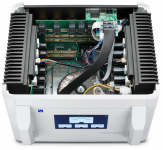
That has been covered. I did not make the labreports but a German engineer did it 7 years ago.Could it be that the amps are 240 and you run them at 220?
I worked for an electronics company making amplifiers, dimmers, lighting desks, audio mixing consoles.... The amps were anything between 2X400W - 2x2kW (2000W) for PA use. I remember quite well that we had a dedicated mains feed to the test rig, to prevent the mains line voltage sag.... otherwise, the max power reading with 2 x 2000 W models were unreliable and always showed fewer watts.
Needless to say, at the actual stage rigs, the mains power distribution was always sub-par.... I recon those amps were developing around 1000W due to the lousy distribution.
What does the sticker at the back of the amps show? 240V AC or 220V AC? Take the photo and post it here.
Needless to say, at the actual stage rigs, the mains power distribution was always sub-par.... I recon those amps were developing around 1000W due to the lousy distribution.
What does the sticker at the back of the amps show? 240V AC or 220V AC? Take the photo and post it here.
Was just reading through this thread for good entertainment, but feel I have to point out one little thing which seems overlooked.
In the report from the German engineer it says "stromaufhname 405W". Now my German really isn't all that great, but I guess this would be something like "Strømforbruk" in Norwegian or power consumption in English. I can of course be wrong, but from a quick search it seems this is about 150w short from rated specs, which to me sounds like the amp is 1: running on lower mains voltage than intended or 2: has been serviced by environmental activist at one point in life
In the report from the German engineer it says "stromaufhname 405W". Now my German really isn't all that great, but I guess this would be something like "Strømforbruk" in Norwegian or power consumption in English. I can of course be wrong, but from a quick search it seems this is about 150w short from rated specs, which to me sounds like the amp is 1: running on lower mains voltage than intended or 2: has been serviced by environmental activist at one point in life
- Status
- Not open for further replies.
- Home
- Amplifiers
- Pass Labs
- Measured vs Specified power ratings of Pass X600.5
